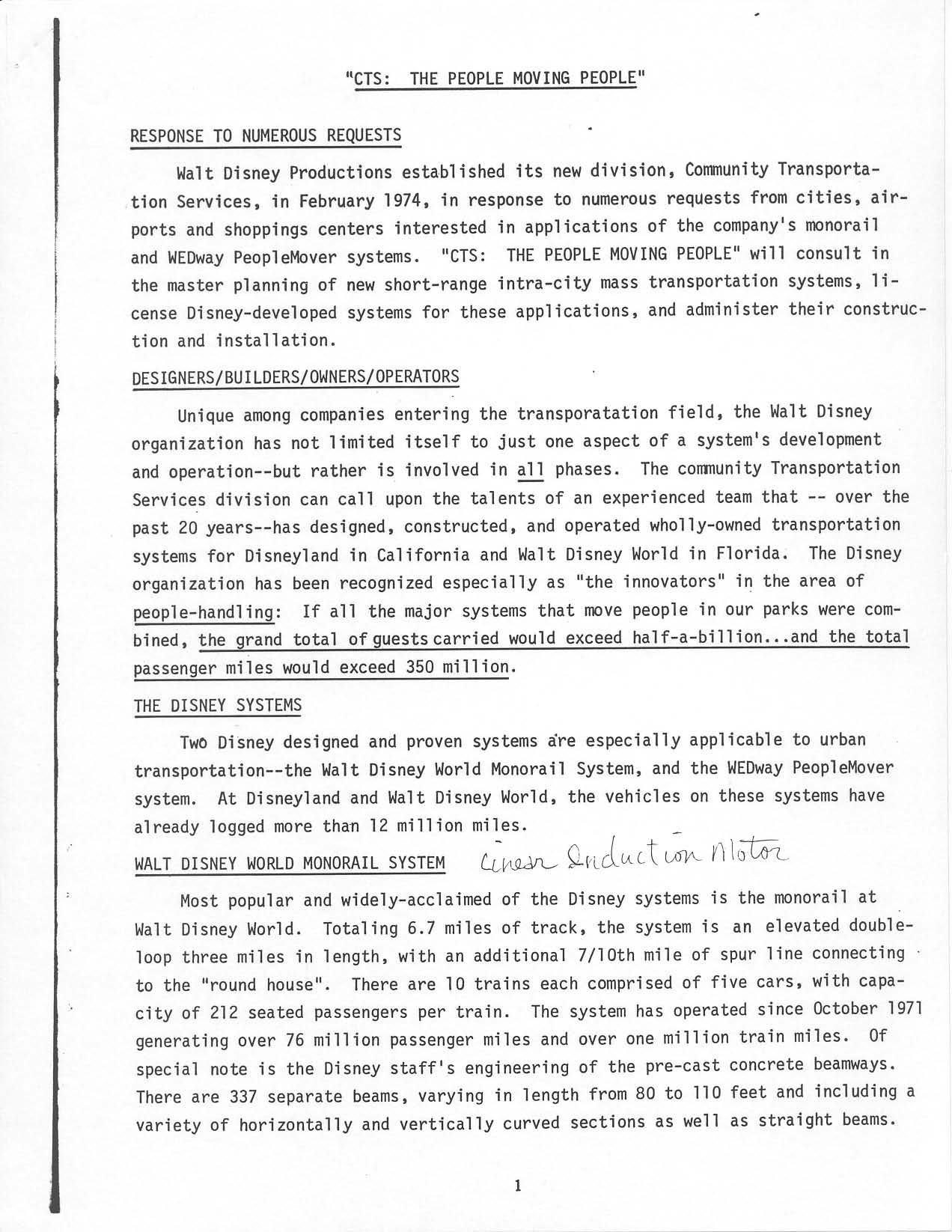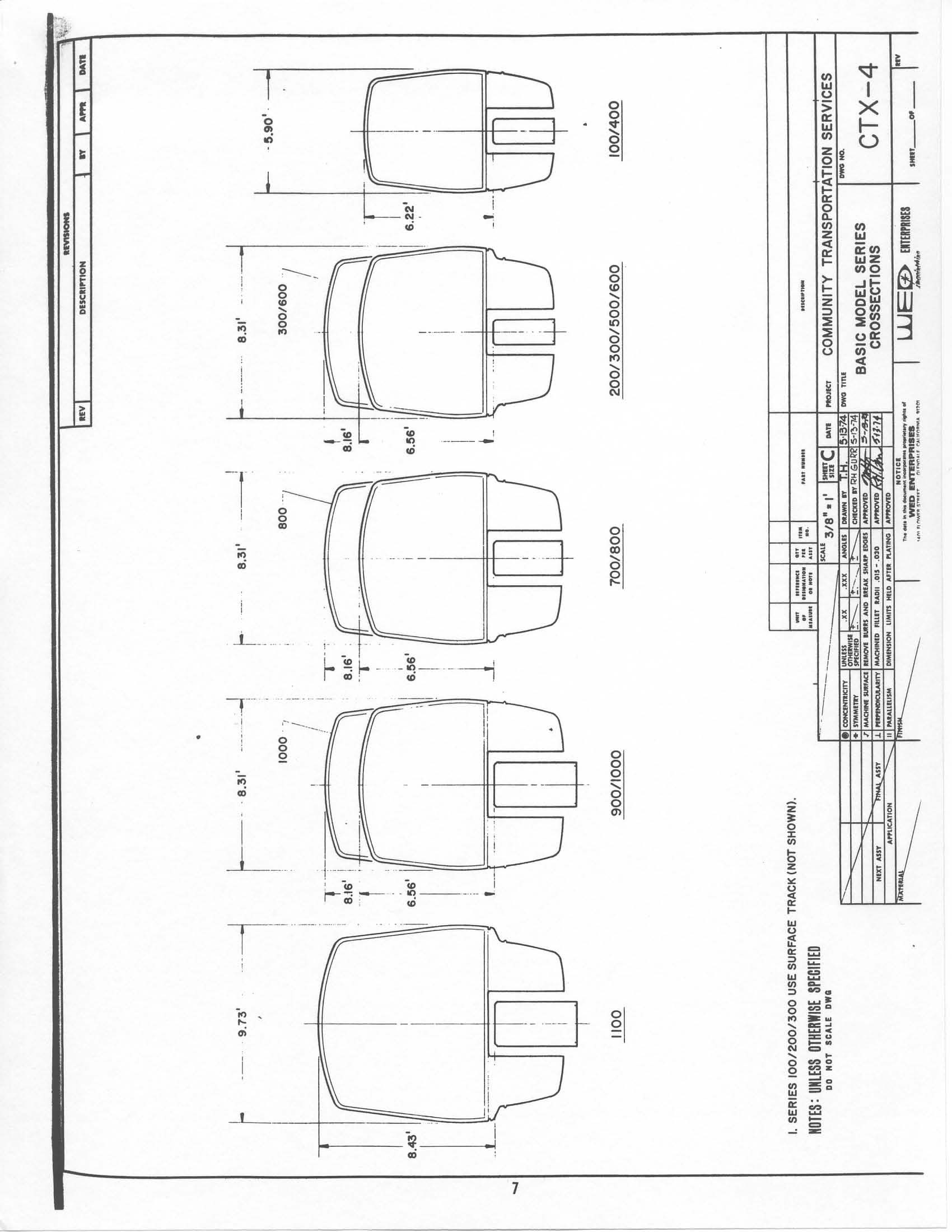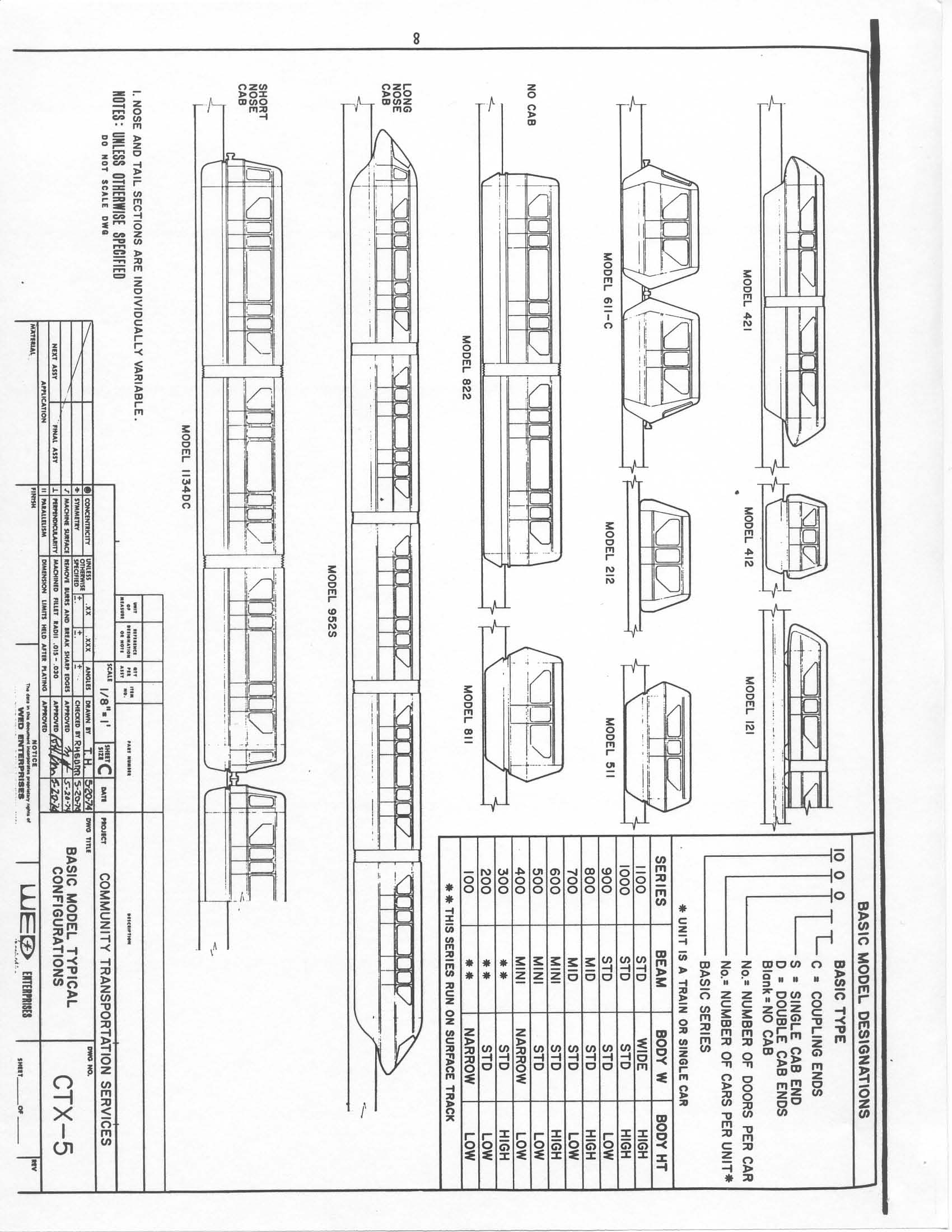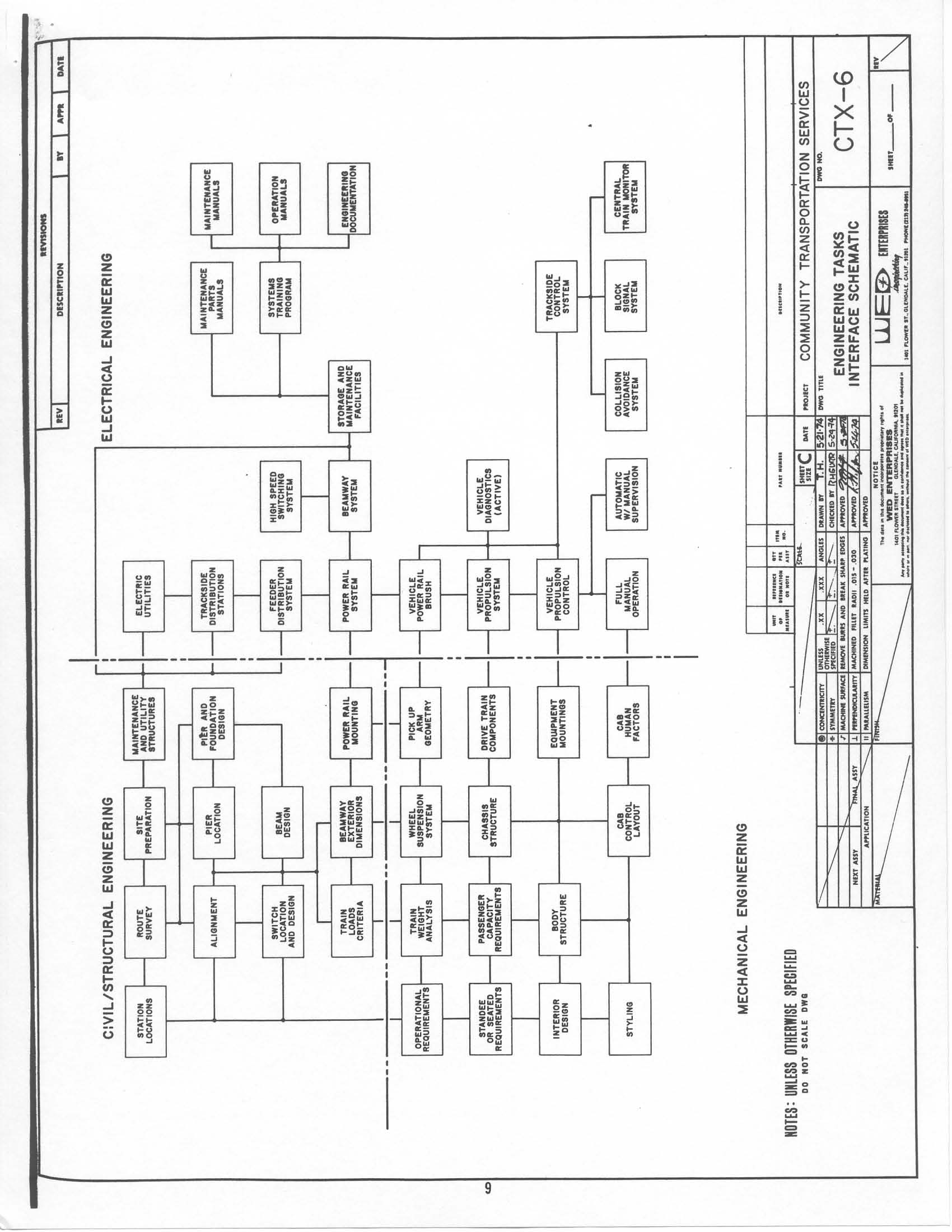
The first few decades of Walt Disney Imagineering were marked by a series of escalating technical innovations that built on previous achievements while preparing Walt Disney Productions for subsequent phases of development. Under Walt’s guidance the profits and knowledge gained from each new project were funneled into the next, with every step pushing the limits of the company in new and unexpected directions. At the time of his death, Disney was preparing for the greatest challenge of his career – the creation of Walt Disney World in Florida and the design process for the “city of the future” that he called EPCOT.
The original concept for EPCOT was a massive and risky undertaking, which sought not only to entertain or inform but to completely change the way the American public thought about their cities and communities. EPCOT would be a complete, functioning city designed to not only provide services for its residents and guests but to act as a testbed for new technologies and theories of urban design which could then be exported to the country at large. EPCOT would not be built so that one could travel to Florida and ride a monorail, it was designed so that guests might be able to one day ride a monorail in their own community. Corporations and designers would come to EPCOT to test and refine their designs, which would then become part of the urban fabric nationwide.
When Walt Disney died in 1966, the seeds of EPCOT’s own demise were sown. EPCOT was such an exotic and expensive project that many believed it couldn’t be built, but those same words had been spoken about many projects from Snow White and the Seven Dwarves to Disneyland itself. Disney scholars will disagree to the end of time whether, had Walt lived, EPCOT would have been completed. Knowing Walt’s track record, though, I can’t help but to believe it would have happened. Without Disney himself at the helm, though, the project had no champion or unified vision.
Yet even after Walt’s death, Walt Disney Productions didn’t immediately abandon the plan for EPCOT. Walt’s brother Roy rededicated the company to the purpose of completing Walt Disney World in Florida by 1971, and in the process of creating the resort they developed and prototyped many of the technologies intended for use in EPCOT. The master planning process in Florida mirrored many of the guiding theories behind EPCOT, and even as EPCOT city itself faded into history a great number of the programs that had been created to prepare its design continued their work.
One of these divisions was Community Transportation Services, a branch of the company founded in 1974 “in response to numerous requests from cities, airports and shopping centers interested in applications of the company’s monorail and WEDway PeopleMover systems.” Disney had debuted both the monorail and PeopleMover in his theme parks with the intention of promoting both technologies for use outside the berm. The PeopleMover, which opened at Disneyland in 1967, was created specifically in preparation for EPCOT. A more refined design, which opened at Walt Disney World in 1975, would mark the first use of linear induction motors for public transportation. The CTS division would spin off these technologies for outside use, helping to fulfill the mandate of EPCOT even as plans for the city itself fell by the wayside. CTS would “consult in the master planning of new short-range intra-city mass transportation systems, license Disney-developed systems for these applications, and administer their construction and installation.”
The following document is dated to June 3rd, 1974, and both promotes the CTS division and gives a selection of its monorail-based designs. It appears that the main goal of the CTS designs was flexibility; the document touts their modular construction and the wide array of configurations available to customers. If you notice, designs were made for standard, medium and narrow gauge tracks. Trains were available with high or low ceilings, and wide, standard or narrow bodies. The modularity of the design allowed for cars to be as long as desired and feature any number of seating arrangements. Trains could have cabs on one or both ends, or could even operate without drivers.
Click below for some scans of the document; it’s a fascinating peek into a hopeful era of Imagineering and a time when Disney was still trying to forge into new frontiers and to lead instead of follow. With gasoline at record highs and more people longing for functional mass transportation in cities worldwide, wouldn’t it be nice to have a CTS-designed rail system to take to work in the morning?























Michael,
Great article.
Thanks for sharing the scans and info with us!
Thanks very much! This is one of my favorite bits of ephemera I’ve come across over the years, especially as I had never heard of the CTS division before I found it. It’s definitely an interesting glimpse into what could have been…
This is so fascinating. Every time I am riding the People Mover (I’ll never be able to call it the TTA) at WDW and see the EPCOT model, I think of how what is now EPCOT was not Walt’s vision. Don’t get me wrong, EPCOT is my favorite park and I dearly love what IS there… it’s just not what Walt had envisioned. I would love to know how the transportation system in the US, particularly in cities, would be different had Walt lived to make his vision a reality. I love the illustrations and diagrams as well as getting to actually read the text of this document that you shared!
Christi
[…] Disney’s vision for future cities was the sleek and efficient monorail. We’ve already discussed Community Transportation Services, the division of Walt Disney Productions set up to develop […]
I wanted to correct your article that the technology was never used again after Houston. In 1984 Disney licensed the Wedway and Monorail to Bombardier from Canada and the Wedway technology was used in the US Capital Building to replace the Senate Subway system that was installed in 1918. A derivative of the Monorail was installed in Las Vegas. I do agree that it is unfortunate that neither technology has expreeinced wide acceptance.
Jud
[…] article above, and there’s more on the Community Transportation Services division here. Image via Progress City USA. Click for the full piece on CTS division of Disney! This entry was […]